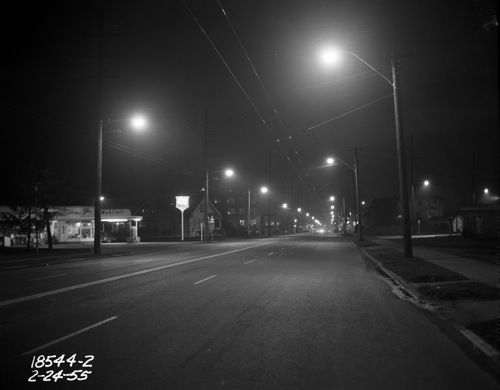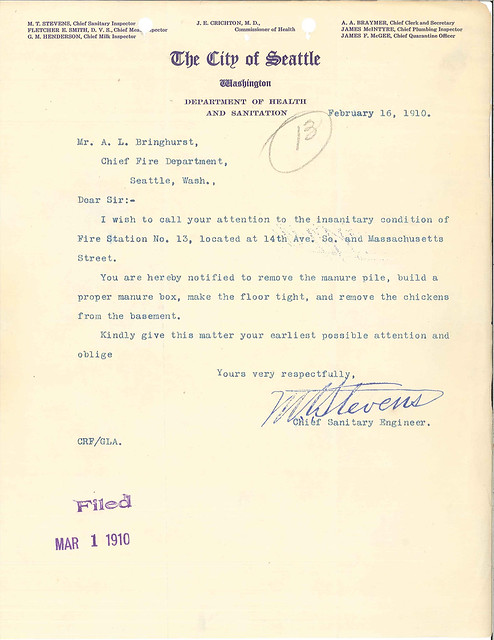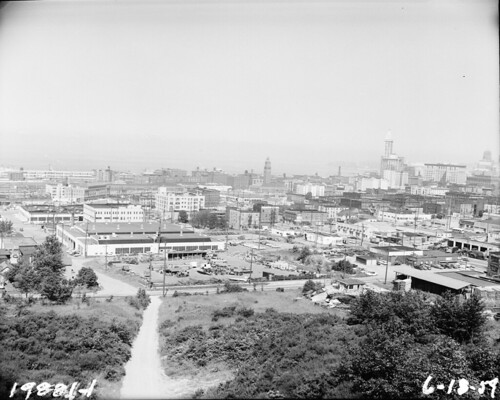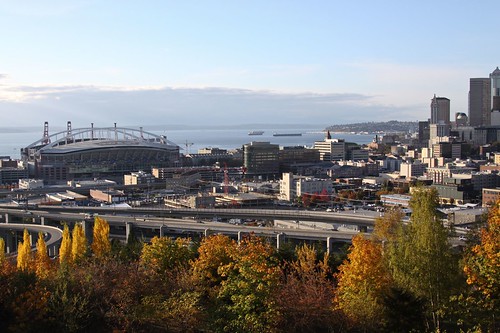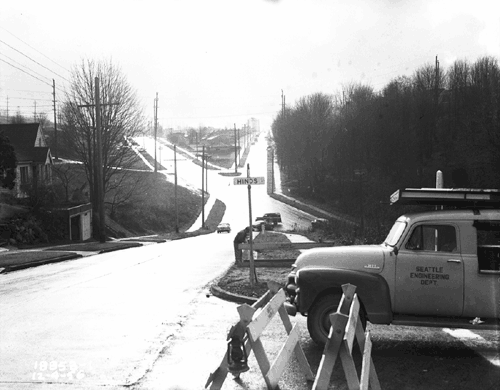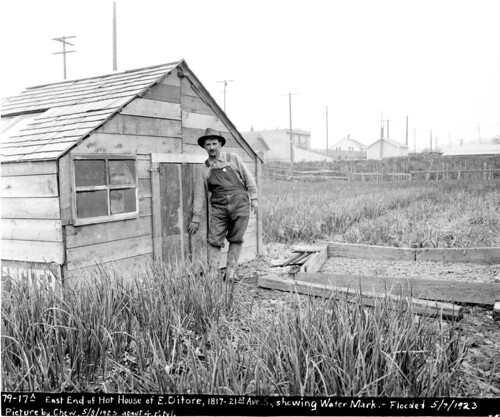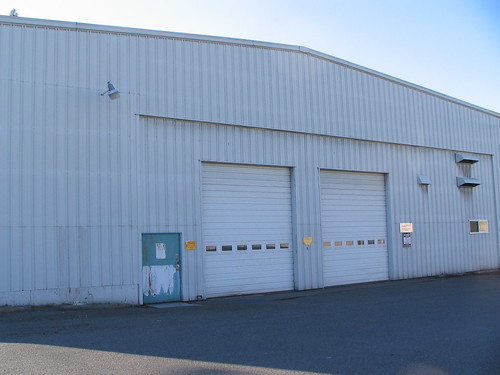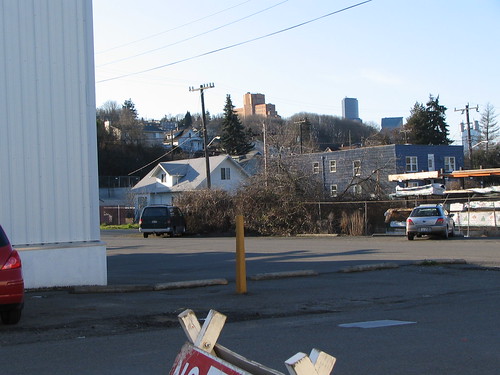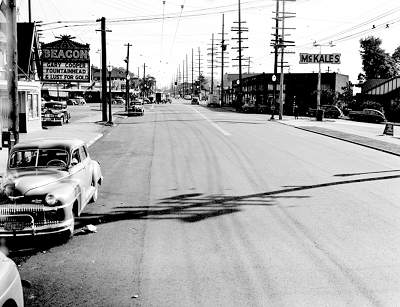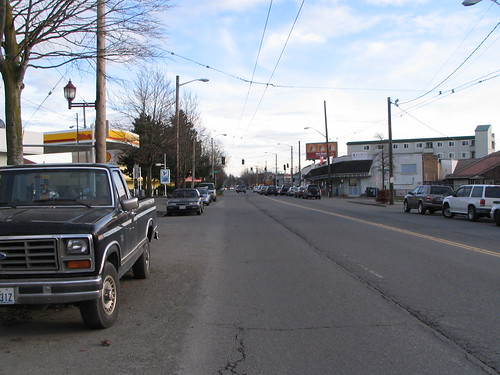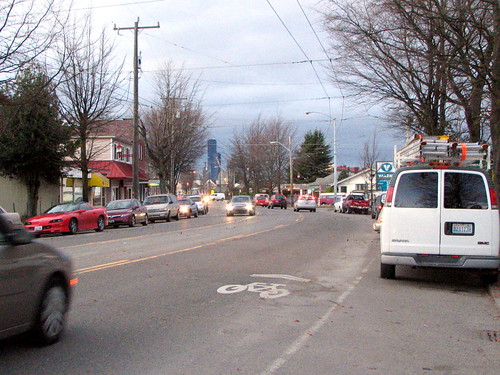
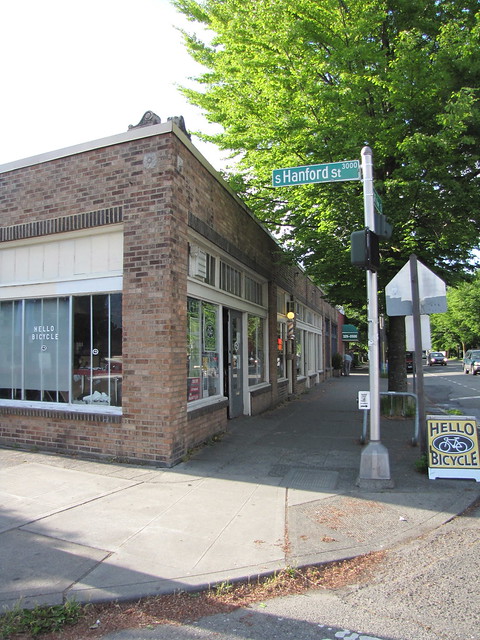
This is the intersection of Beacon Avenue South and South Hanford Street, looking north on the west side of the street. Beacon Hill is apparently much greener than it once was, at least as far as street trees are concerned. You can see that the 1959 view shows no trees at all.
Another notable difference between Beacon Hill then and now is the pharmacy. The Hill currently has no pharmacies, but in the past there were quite a few, including Engstrom’s where Hello Bicycle is now located. North Beacon residents could easily walk to their local drugstore for prescriptions or — as the sign on the front of the old pharmacy advertises — Carnation Ice Cream.
Nelson’s Gifts is also gone, unfortunately replaced by a completely blank storefront. (We’re told it’s an art/design studio.) On the other hand, the shop one door north of the pharmacy is now exactly what it was in 1959: a barber shop.
